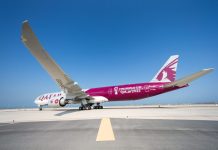Policy Recommendation:
KSRTC – The Kerala State Road Transport Corporation, is making losses every day and it cannot be allowed to be closed down, crushed under the ever increasing losses, as it provides vital service and also act as price-control mechanism in the public transport sector. It is necessary to turn it around and this is proposed through a major change in policy of the government, which now requires KSRTC to undertake every activity on its own and instead, ushering in public-private partnership in some key areas, where the management lacks resources and expertise.
Back ground:
The KSRTC, the biggest public sector Unit of Kerala, is constantly in the red, with accumulated losses of Rs.1529 Cr as on 31st March 2012. Every month, it incurs a loss of Rs.58 Cr on an average, and this is showing an upward trend. The support from Government is minimal. At the same time, the Government, as part of appeasing various sections of the society, decided in the past to give concessions to students, freedom fighters and even to journalists, who command handsome perks and allowances. On an average, a student spends Rs.55/month and travels 500 km per month. In addition to this, the political pressure from MLAs, MPs and Local Self Government functionaries force the Corporation to ply buses to uneconomical routes, often to remote places.

The middle management consists of promotees from the lower cadres and not aware of the modern management techniques and often not capable of handling higher responsibilities. The e-governance programme started some years ago has not created any impact. The biggest blow to the corporation occurred when, in the year 1984, the Government without grasping the long term implications, introduced Pension scheme at par with Government employees. KSRTC has 26705 permanent staff, 13275 casual staff and about 200 officers. The number of pensioners as on date is 35354, and soon will surpass the number of serving employees. The pension amount comes to around Rs 409 Cr, the salary bills around Rs.644 Cr and it requires, Rs.1053 Cr every year to pay the salary and pension. The monthly income is around Rs.139 Cr and Rs.149 Cr is needed as operational expenses, which include salary of the staff. If the pension amount is taken out, the KSRTC can make a profit of Rs.23 Cr every month. It is time for a major policy change, in the operation of the Corporation and this is proposed to be achieved through introduction of Public Private Partnerships in key areas.
Rationale for Policy Change:
The salary bills, the pension benefits, the operational expenses – cost of fuel, spare parts, tyres, etc are going up every year and therefore the accumulated losses will also shoot up. The losses have to arrested, the Corporation needs to be made efficient and profit generating, so that it need not depend on the government for its funding every year. The surplus funds generated from its operation could be invested in better infrastructure and facilities, thereby, providing better service to the passengers. It could also pay back the investments made by the government once it is on a self footing, contributing to the public exchequer. If some drastic steps are not taken at this stage, the cash starved coffers of the government will be drained further, as the government cannot close down this essential public service.
Alternatives & Comparative Analysis:
Alternative 1: Government taking over the pension expenses of all the present and future KSRTC pensioners as in the case of the other government employees. This will take away the liability of paying Rs.409 Cr every year or more from the KSRTC revenues and also permit the Corporation to come out of the red, to use the operational profits not only for meeting the operational expenses including salary of its existing staff, but also to provide some cash reserves for making meaningful investments in priority areas such as capacity addition of buses, modernising bus stations and other facilities, etc..
Alternative 2: Government to provide soft loans to the Corporation as working capital or arrange for interest free loans from funding agencies. This will not wipe out the losses in one step, but will provide for making investments in improving the infrastructure and buses.
Alternative 3: Government to issue orders for voluntary pension scheme or even stop the pension scheme for those retiring from the service during this year onwards.
Alternative 4: Invite PPP, which will bring in resources, expertise and efficiency in the following areas.
a. Construction of Bus stations as Shopping Mall cum Multiplexes. This is an idea which was mooted in the year 2001 and some steps were taken towards its fulfilment. But later, a new entity, Kerala Transport Development Financing Corporation (KTDFC) was constituted and construction of multiplexes was entrusted to it. The KTDFC borrowed money from outside and had taken up the job, but ultimately, it is public money. Another defect in the scheme, was that the built up area was limited to a portion of the large acreage of land . The KSRTC bus stations are prime locations of any city or town and every inch matters. The buses can be parked in the ground floor or basement floors of multi-storied building built above it, occupying the entire area of the prime land, in strict compliance with the provisions of the Kerala Municipal Building Rules. After completion, the operation and maintenance of the built up space is planned to be taken up again in a governmental way, leading to customer dissatisfaction. The operation and maintenance of the entire facility could be entrusted to some reliable Facility Management Agency, on the basis of a performance based revenue sharing system. The customer satisfaction level in this arrangement will be at maximum.
b. CNG Pumps in KSRTC bus stations: The diesel prices are going up and soon will be decontrolled. This will further increase the operational costs. Pilferage is common and KSRTC has not estimated the losses on account of this. The environmental pollution from the diesel engines and the hazardous wastes generated by the buses, the high maintenance and replacement costs of engines are issues to be addressed. Delhi Transport Corporation had switched from diesel to CNG. CNG is not so popular in Kerala, due to small number of filling stations. The proposal is to convert all the buses into CNG and set up CNG filling stations by the side of the road, so that KSRTC as well as other vehicle owners can avail the facility. This can be done as a revenue sharing model and also put an end to pilferage, as CNG cannot be transported in cans and sold elsewhere.
c. Wet lease of Buses: It is a practice in any State, every new government/Minister announces to introduce 1000 more buses, as and when they assume power. It is not necessary to purchase buses. The buses, especially the long distance buses can be hired on long term contract for 5 to 7 years, with driver, and by ensuring 95% uptime. There is no requirement of paying pension to the driver, no need for maintenance and spares, no tyre replacement, and the rates of this arrangement will be lesser than the running cost (including staff cost and pension) of the KSRTC owned buses.The vehicle manufacturers can also ‘dry lease’ the buses or on an annuity model, so that the initial investment is reduced.
d. Courier Services: KSRTC has a net work spanning the entire State, covering the nooks and corners. The buses are not designed to carry parcels and the luggage on the top of buses, has its own problems of loading and unloading. First requirement of this strategy is to acquire buses that can hold parcels in its belly and ply them in long distance routes. The logistics of sorting the parcels, loading/unloading and delivery, has to be entrusted to a courier company, which will manage through a software driven parcel tracking system. The KSRTC bus stands will also act as collection points.
e. On-line reservation and Booking agents: All the seat arrangements of long distance buses are to be mapped and displayed on line, so that public can book tickets on line. KSRTC is presently doing this and hardly 500 passengers avail this facility. The season tickets could be introduced as smart cards, with readers on every bus, the students’ concession and other ticketing arrangements could be outsourced to private agents. This will ensure more sales and also relieve the public of the hard ships of coming to the Bus stations for getting them, as they are either delivered by post or obtained from the agents at their shops.
f. Advertisements in Buses and Bus stations: KSRTC has not yet tapped the potential revenue from advertisements, except leasing out space for a few hoardings here and there and also on some of the buses. It is possible to completely turn towards digital bill boards, installed on vantage points on the buildings, inside buses as on LED/LCD displays (updated through a Wi-Fi, when the buses enters a station). This could be effectively undertaken through private agencies.
g. Shared purchase of Buses:The long distance buses, especially inter-state buses have to be treated as a profit centre and the investment on the buses shall be done through floating of equity shares. The revenues and expenses of the buses shall be separately accounted and profit shall be shared between the share holders at the end of every month/quarter. The investment can first come from the employees and later from general public, after demonstrating the proof of concept. This model will ensure the participation of employees and create a sense of belonging among them.
On evaluating the four alternatives listed above, it could be seen that, the first two alternatives, will require additional funds from the government, which will be near impossible under the precarious financial position of the State.The third alternatives is a hard political decision, jeopardising the income and benefits of over 34,000 families, they enjoyed till the other day. Borrowing from the funding agencies/banks will be costly option. The pros and cons of the fourth alternative are discussed as follows;
i. The private sector will bring in resources, expertise and efficiency and the result will be increased customer satisfaction.
ii. The much needed capital is also brought in by the Private sector so that expansion programmes and other capital investments could be undertaken in a phased manner.
iii. The conversion of buses into CNG driven and also hiring out space for setting up CNG filling stations to private sector will popularise the use of CNG in heavy vehicles and this will reduce pollution and subsequent health issues, through out the State.
iv. The passengers will be offered every facility from good toilets to good hotels, shops in the multiplexes and the performance based management system ensures that such facilities are maintained well.
Coming to the problems that may be confronted, is the strong opposition from trade unions against involvement of private agencies in the above sectors. There will be opposition against leasing out space for setting up CNG stations, outsourcing the booking operations etc. But all these oppositions could be over come when better pay and perks are offered to the employees, when the income start coming from the schemes mentioned.
Other requirements:
a. Instead of undertaking the above activities by the mammoth Corporation directly, it will be ideal to create a SPV as a subsidiary company, with 74% equity from the KSRTC, with professionals at the top to manage the private partners and for better accountability. The involvement of employees can be ensured through issuing one share each to every employee for the remaining 26% so that their representative is also included in the Board of new SPV.
b. Negotiations with the employees is a pre-requisite, as a confidence building measure and also part of transparency of the arrangements with private sector.
Monitoring & Evaluation:
a. Monitoring and evaluation shall be done on the basis of Key Performance Indicators, which shall be part of the concessionaire agreement, for the respective services offered.
b. This shall be done at two levels, one at the Bus depot level (treated as a profit centre) and another at the State level by Committee headed by the Hon.Transport Minister.
Conclusion:
The financial problems of KSRTC cannot be solved over night. The ever increasing accumulated losses donot allow the Corporation to grow and provide efficient services to its customers, but always depending on the government for any capital investment. The resource crunch prevents the government from taking up the huge recurring commitment in terms of the pensionary benefits of over 34000 persons. The customer services are hit because of all these issues and the major policy change to bring in private sector will provide with resources and efficiency. This will generate substantial income and in 10 years, the accumulated losses could be wiped off, provide better pay and perks to the existing employees and to a certain extent to the pensioners through contributory pension scheme.The substantial cash inflow expected will help the Corporation to come out of the present financial situation, provide adequate fund for new investments and ultimately benefit the customers through better service. The decision to be taken by the Ministry at this stage is to permit the corporation to go in for PPP model of operations in the above mentioned areas for which discussions with the Unions have to be started immediately.
Source: Biju Prabhar’s Blog


















